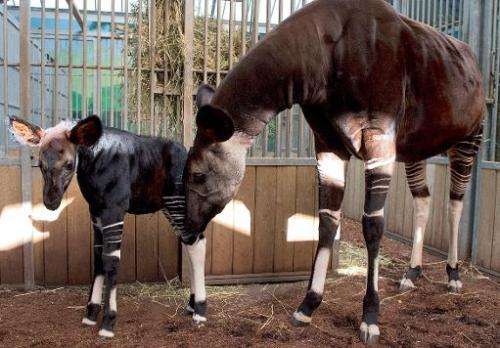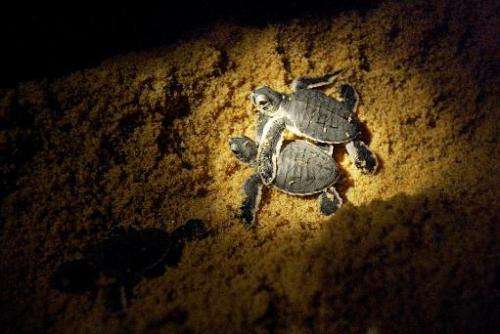Okapi, Flufftail face extinction: IUCN 'Red List'

The giraffe-like Okapi and the White-winged Flufftail, one of Africa's rarest birds, are on the verge of extinction, conservation body the IUCN warned on Tuesday.
In an update to its "Red List" of threatened species, the International Union for the Conservation of Nature said the animals had been driven to ever closer to destruction.
The Okapi, a smaller cousin of the giraffe, is unique to the rainforests of the Democratic Republic of Congo, where poaching, habitat loss, and the presence of rebels, elephant poachers and illegal miners are the principal threats to its survival.
It is now ranked as endangered, the third step from extinction on the IUCN's nine-notch scale.
"The Okapi is revered in Congo as a national symbol -– it even features on the Congolese franc banknotes," said Noelle Kumpel, head of the organisation's Giraffe and Okapi Specialist Group.
"Sadly, DRC has been caught up in civil conflict and ravaged by poverty for nearly two decades, leading to widespread degradation of Okapi habitat and hunting for its meat and skin," she said, adding that its survival hinges on supporting government efforts to stem violence and help the poor.
The White-winged Flufftail, meanwhile, has been listed as critically endangered, putting it on the edge of the extinction abyss.
The small, secretive bird is found in Ethiopia, Zimbabwe and South Africa.

It has been hit by wetland drainage, conversion for agriculture, overgrazing by livestock and cutting of marsh vegetation.
But there was good news for threatened species, the IUCN said: two kinds of albatross, plus the Leatherback Turtle and the Island Fox are showing signs of recovery.
The Black-browed Albatross and Black-footed Albatross—both vulnerable to accidental capture by fishermen—are now at a lower risk of extinction due to populations increases.
The albatross is one of the most threatened of the planet's bird families, but the Black-browed variety was shifted from endangered to near threatened—five steps from extinction.
The Black-footed Albatross, meanwhile, was moved one notch down the list from vulnerable to "near threatened".
The Leatherback Turtle's fortunes were nonetheless mixed, the IUCN cautioned.
The Northwest Atlantic population is now abundant and increasing thanks to successful conservation.
But in contrast, the East Pacific Ocean population along the coast of the Americas, and the West Pacific Ocean subpopulation, found in Malaysia, Indonesia, Papua New Guinea and the Solomon Islands, are in severe decline due to egg harvest and incidental capture in fishing gear.
The Island Fox, previously listed as critically endangered, also improved in status and is now listed as near threatened.
Found on the California Channel Islands off the coast of southern California, the Island Fox suffered catastrophic declines in the mid 1990s mainly due to disease and predation by non-native species such as the Golden Eagle.
But it has been given a helping hand by the US National Park Service, via captive breeding, reintroduction, vaccination against canine diseases and relocation of Golden Eagles.
"This IUCN Red List update shows some fantastic conservation successes, which we must learn from, for future conservation efforts," said Jane Smart, global director of the IUCN Biodiversity Conservation Group.
"However, the overall message remains bleak. With each update, whilst we see some species improving in status, there is a significantly larger number of species appearing in the threatened categories," she added.
Of the 71,576 species assessed by the IUCN, 21,286 are threatened with extinction.
© 2013 AFP
















